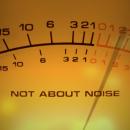

Coming To Terms With The Termsīefore getting to grips with practicalities, three terms need to be understood: 'hitpoints', 'warp tabs' and 'Q-points'. However, when it's just a few loops that require processing, or I want to create loops from performances I've recorded myself, or if something more than basic tempo-matching is needed, audio warp is definitely up to the task. The audio warp capabilities of Cubase that we're about to explore are undoubtedly very powerful, but I'd offer a word of caution: much as I like Cubase's audio warp functionality, if I'm working with projects that are dominated by commercial sample library loops and require simple tempo-matching, I'll usually go instead for a tool designed specifically for that job (in my case, Sony's Acid Pro). These provide a number of creative and corrective possibilities, but the emphasis of this sort of processing is mainly on loops, so I'll concentrate upon loop-based applications in this column. Under the broad heading of 'audio warp', Cubase also features some non-destructive tempo and pitch-shifting tools. Cubase's audio warp facilities provide a powerful toolkit for manipulating the timing of recorded audio to fit grids and grooves.īack in September, I looked at applications of the off-line Time Stretch function.


 0 kommentar(er)
0 kommentar(er)
